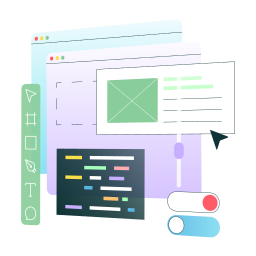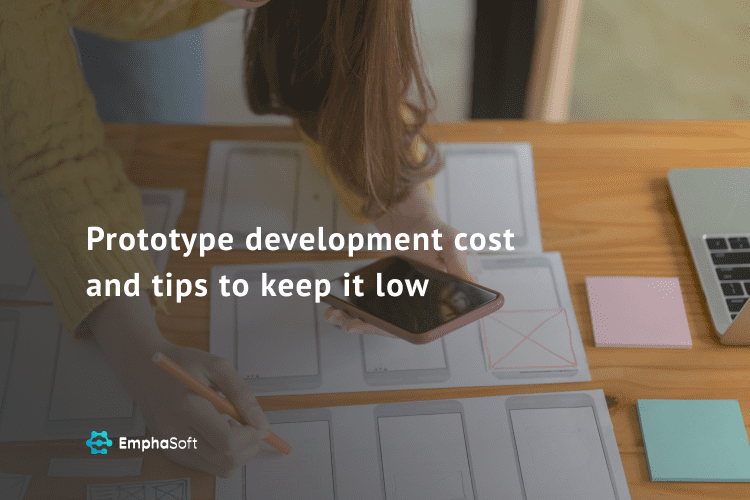Prototyping is a method for verifying a new product idea. Prototypes are focused on the visual aspect of the future solution (its design) that will dictate and influence the way the solution is built.
Prototypes can look different and serve different purposes. Some prototypes are digital mockups in design tools, such as Figma and Adobe XD. Other companies create functioning solutions that resemble an MVP and call them prototypes. This means that their outlook and cost to develop might cover a wide range.
Today, we will look at the key factors that contribute to the prototype’s cost and find out how companies can drive the overall cost down without damaging the quality of the prototype.
The prototype cost dropdown
In software development, prototyping usually involves a cross-functional team of design and technology specialists who can cover all aspects of the prototype.
This means that the cost of the prototype usually consists of:
- The price of the software used to draft a prototype.
- The total cost of the time of all employees involved in the process.
A simple mockup of a mobile app in Figma can cost anywhere from $500 to $10 000 depending on the number of screens that have to be designed and how many iterations are made to those screens. More complex prototypes that are functional would involve coding and can cost up to $20-30K. And that price can be much higher if a unique or complicated technology skillset is required that the in-house team does not possess and must look to hire for.
Sustainable ways to reduce the prototype’s cost
The ultimate goal of prototyping is to reduce business risks associated with investing heavily in the wrong solution. It is designed to be a trial and error period before the project kicks off.
Risk management and identifying what exactly the customer wants are very important. And not all prototyping costs can be reduced without harming the end result.
However, there are ways one can make prototyping less financially demanding.
#1 Include the core functionality only
The number one rule of prototyping is to only design or build the absolute core features of the future solution. Yet, in between the executive meetings and team discussions, extra features seem to magically appear out of nowhere.

If you’ve estimated the cost of the prototype and the final number is too high, go through the approved feature set once again and ruthlessly cross out anything the prototype can do without.
#2 Go for simpler prototypes that get the job done
This is a recommendation that you should take with a grain of salt. Yes, building a quick interactive mockup in Figma seems to be sufficient, and you can use it instead of a complex code-involving prototype. Yet, there is always a trade-off when selecting an easier option, so make sure you are willing to take that risk and calculate potential additional costs in the project’s later stages.
#3 Outsource prototyping to an expert agency
Many companies have limited experience with prototyping because they only produce a handful of solutions. As a result, their prototyping process is unoptimised, excessively lengthy, and, often, more expensive than it needs to be. Worst of all, they might not reach the end goal – to correctly estimate the viability of the product idea.
One of the ways to combat those risks would be to hire in-house professionals, but that will take time and turn the whole endeavour into a very costly process. Alternatively, companies can hire agencies, such as Emphasoft, that specialise in software development.

Emphasoft, for example, provides consultancy as well as actual prototyping to startups and established businesses. Thanks to their vast experience, our professionals can identify the strengths and the weak points of a product idea quickly and move through the prototyping process smoothly, allowing the business to focus on other important targets without wasting any time.
Final thoughts on prototypes’ development cost
The key goals of prototyping are verifying the initial idea, reducing the project risks, boosting user engagement, and addressing potential issues early in the project. The way the company handles the prototyping stage will influence all product development steps down the line, so it’s important to do everything right.
And doing things right sometimes means spending more than you would ideally want. In those situations, it is vital to not only calculate the development cost but factor in the savings that your company will have as a result of not wasting time and money on solutions and features users don’t want.
Illustrations by icons8.com
Read more:
Tips for making your mobile app stay successful and fresh
The difference between POC, prototype, and MVP
The phases of software development life cycle









 Schedule a Discovery Call
Schedule a Discovery Call Schedule Call
Schedule Call